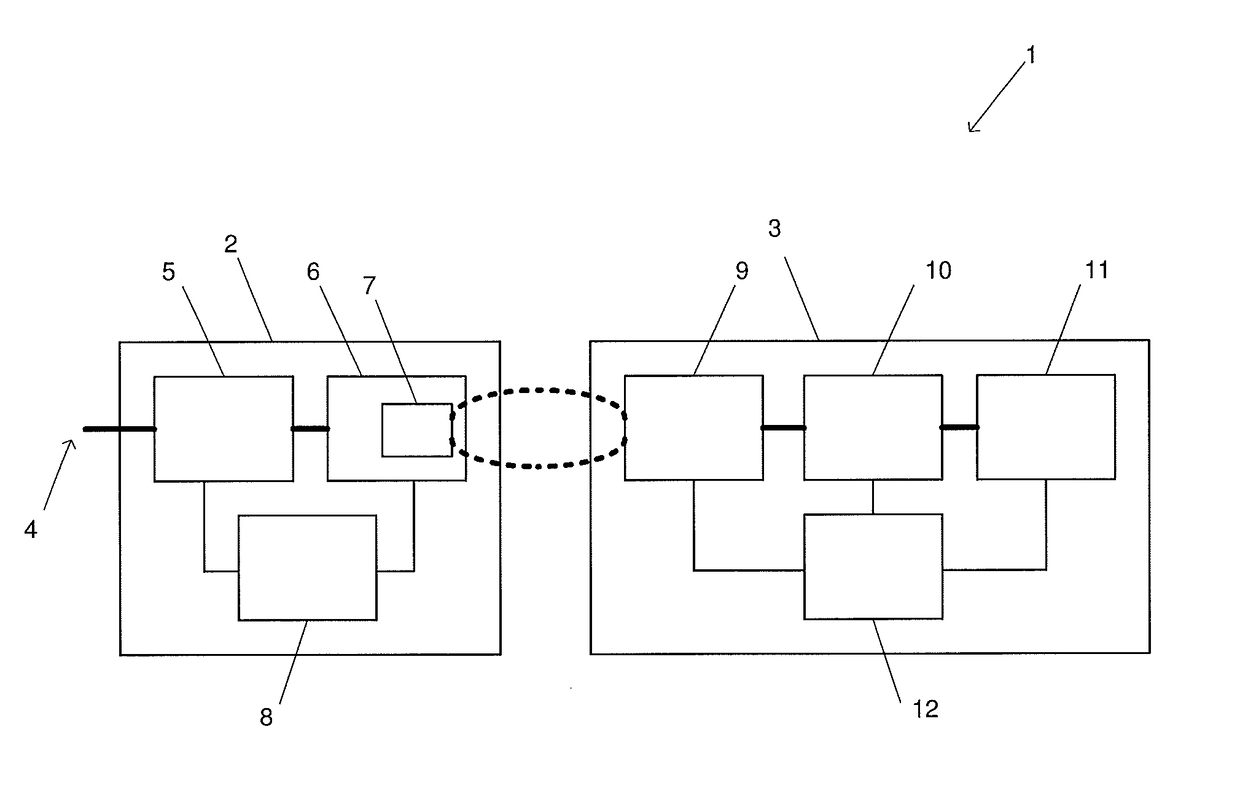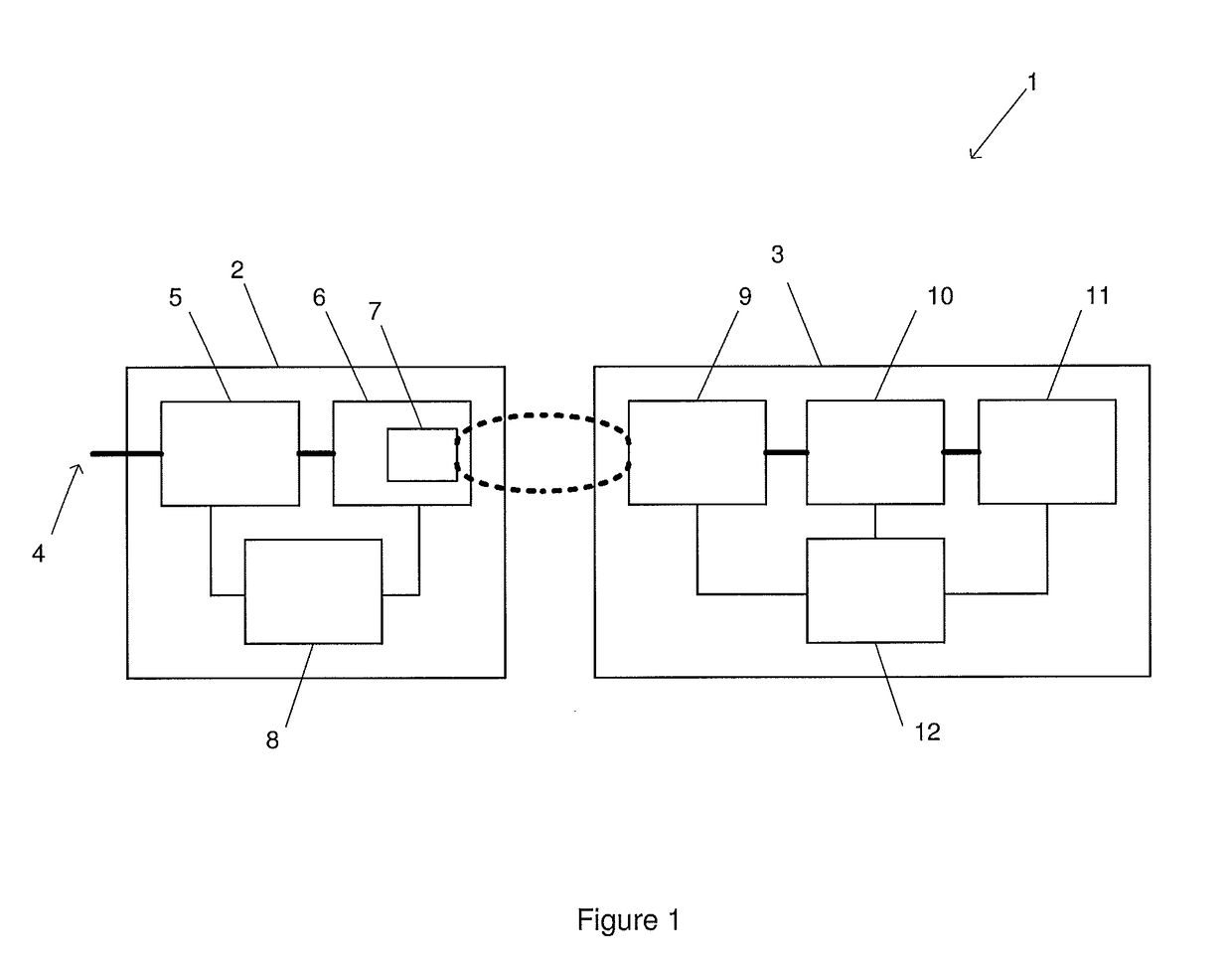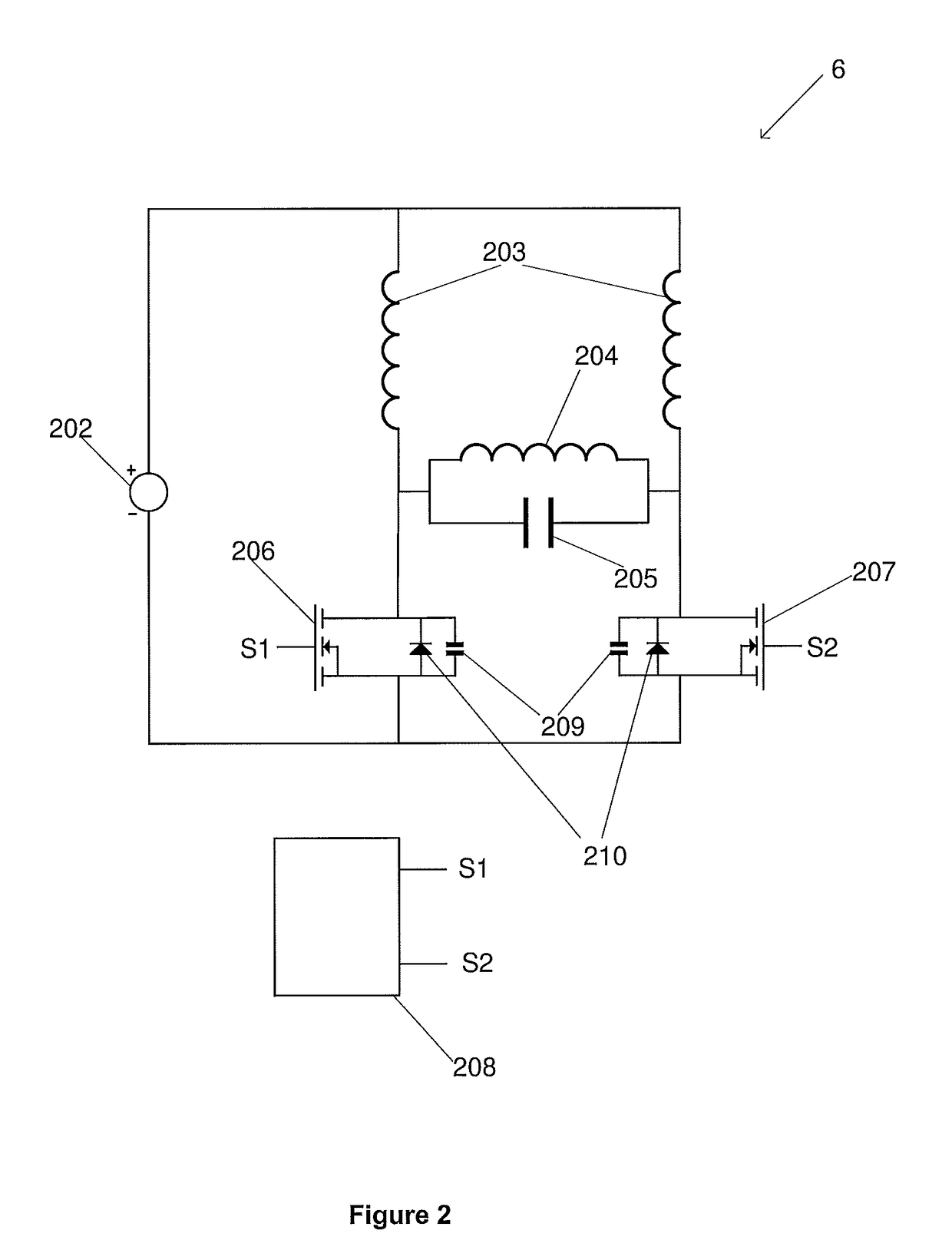Converter
a technology of converters and coils, applied in the field of converters, can solve the problems of reducing power throughput, adding complexity and cost to the design of ipt systems, and not fixed but varies in resonant frequency of transmitters, so as to achieve simple and cheaper manufacturing of receiver coils, output ripple, and the effect of reducing the cost of production
- Summary
- Abstract
- Description
- Claims
- Application Information
AI Technical Summary
Benefits of technology
Problems solved by technology
Method used
Image
Examples
Embodiment Construction
[0030]An inductive power transfer (IPT) system 1 is shown generally in FIG. 1. The IPT system includes an inductive power transmitter 2 and an inductive power receiver 3. The inductive power transmitter is connected to an appropriate power supply 4 (such as mains power). The inductive power transmitter may include an AC-DC converter 5 that is connected to an inverter 6. The inverter supplies a transmitting coil or coils 7 with an AC current so that the transmitting coil or coils generate an alternating magnetic field. In some configurations, the transmitting coils may also be considered to be separate from the inverter. The transmitting coil or coils may be connected to capacitors (not shown) either in parallel or series to create a resonant circuit.
[0031]FIG. 1 also shows a controller 8 within the inductive power transmitter 2. The controller may be connected to each part of the inductive power transmitter. The controller may be adapted to receive inputs from each part of the induc...
PUM
 Login to View More
Login to View More Abstract
Description
Claims
Application Information
 Login to View More
Login to View More - R&D
- Intellectual Property
- Life Sciences
- Materials
- Tech Scout
- Unparalleled Data Quality
- Higher Quality Content
- 60% Fewer Hallucinations
Browse by: Latest US Patents, China's latest patents, Technical Efficacy Thesaurus, Application Domain, Technology Topic, Popular Technical Reports.
© 2025 PatSnap. All rights reserved.Legal|Privacy policy|Modern Slavery Act Transparency Statement|Sitemap|About US| Contact US: help@patsnap.com



